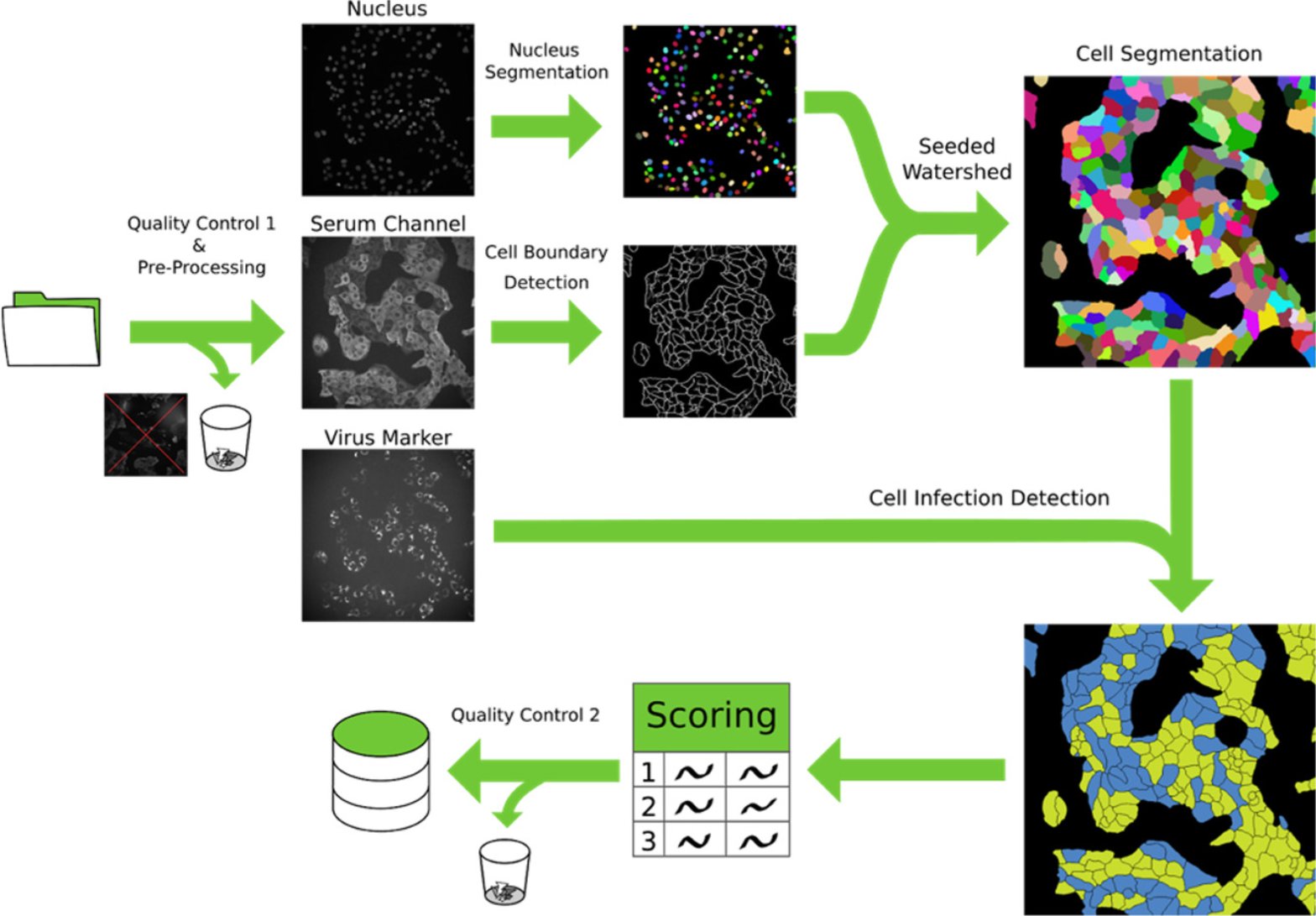
Dr. Vibor Laketa
Vibor.Laketa
@med.uni-heidelberg.de
Phone: +49 6221 56–34410
Establishment and Application of
Advanced Microscopy Infrastructure
Projects
Microscopy and infectious disease research have been inseparable partners ever since in the 1670s Anthonie van Leeuwenhoek used his newly-invented microscope to examine a sample of plaque he had scraped from his own teeth, and observed — for the first time — bacteria and other microorganisms that share the world with us. Undoubtedly, microscopy was fundamental in infectious disease research, as it was necessary for the discovery of infectious agents by direct observation and later on also for their diagnosis.
In modern biomedical research that is being realized in CIID, microscopy-based experimental approach has a central role. A comprehensive understanding of host-pathogen interactions requires quantitative assessment of molecular events across a wide range of spatiotemporal scales and organizational complexities Due to recent technical developments, this is currently only achievable with microscopy. Based on development of new imaging modalities, fluorescent probes and sensors, computer technology, image analysis algorithms and new biological model system, the field of biological microscopy is undergoing a revolution. Only now we are starting to appreciate and make use of the full potential of the microscopy-based experimental approach. Modern microscopes have evolved into complex robotic instruments capable of automatically interrogating a wide range of biological processes at vastly different spatiotemporal scales and organizational complexities, from structural studies on macromolecular scale all the way to whole organ/body imaging in living animals.

We believe that modern microscopy technology is currently uniquely positioned to propel the infectious disease research to a new frontier. For these reasons, we are establishing and applying advanced microscopy infrastructure to allow infectious disease research across the range of different spatiotemporal scales and organizational complexities.

More information about IDIP organisation and instrumentation can be found on the IDIP homepage https://www.idip-heidelberg.org/. If you would like to use the IDIP infrastructure, please follow the instructions at https://www.idip-heidelberg.org/usage-concept.
Microscopy Infrastructure under BSL2 and BSL3 Containment
IDIP projects cover all aspects necessary for the execution of the microscopy-based experimental approach in the context of infectious diseases research. Typically, projects are related to the following activities:
- Implementing, operating and providing advanced microscopy and cell sorting infrastructure under enhanced biosafety conditions (BSL‑2 and BSL‑3). You can find more information on IDIP infrastructure at https://www.idip-heidelberg.org/equipment
Consultation during microscopy-based project planning and experimental design.
Collaboration within projects being executed in CIID.Advice and support in image processing, data visualisation and presentation.
Development of data acquisition and analysis automation workflows.Coordination of microscopy infrastructure investments and support for related grants applications.
Education and training in microscopy and microscopy-related subjects.
Development of microscopy-based assays for drug screening and diagnostics
The microscopy-based approach holds immense potential in advancing translational research and revolutionizing drug screening pipelines, as well as enhancing the sensitivity, specificity, and adaptability of medical diagnostic procedures. In light of the continuous emergence of novel pathogens, the development of rapidly adaptable serological and diagnostic assays to assess their impact on human health and society has become indispensable. The advent of severe acute respiratory syndrome coronavirus 2 (SARS-CoV‑2) has underscored the ongoing challenge of rapidly evaluating the influence of evolving viral variants on existing immunity, therapeutic options, and vaccines. To address this challenge and establish a universally applicable methodology for promptly addressing emerging infections in the future, we are currently engaged in the development of an automated multiplex microscopy approach integrated with machine learning-based analysis. By harnessing this innovative technique, we aim to not only decipher the impact of emerging pathogens on human health but also facilitate the screening and analysis of human therapeutic monoclonal antibodies. We are actively engaged in collaborative initiatives with the CIID and the German Center for Infection Research (Deutsches Zentrum für Infektionsforschung (DZIF)), where we are jointly working on the development of microscopy-based assays addressing diverse projects and a wide range of pathogens.






